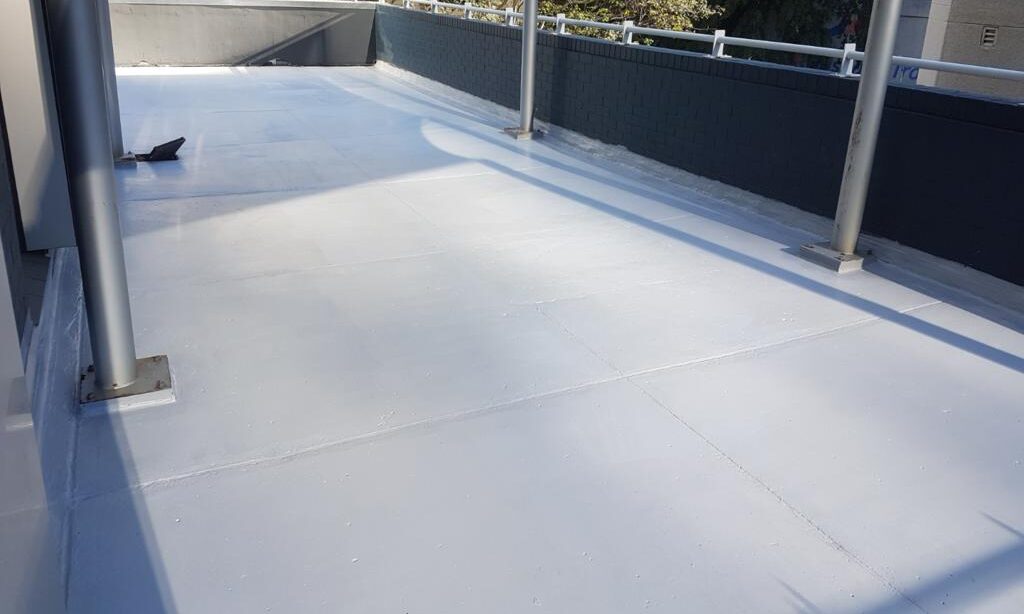
05 Mar Leaking Balcony Repairs Of Defective Waterproofing
Waterproofing Is The Primary Root Cause Of Building Defects In Australia
Waterstop Solutions provides leaking balcony waterproofing repairs and water ingress solutions to concrete balconies, podiums, planter boxes, high-rise dwellings and commercial building roof tops in Brisbane, Sydney, Gold Coast and Sunshine Coast.
An often-quoted statistic in the Australian waterproofing and insurance industry is: “waterproofing is 1.8% of construction cost but represents 83% of building defect complaints”.
Leaking balconies are common, in fact, the insurance industry has identified that water leaks and defective waterproofing membranes installed to balconies, podiums, rooftops and other wet areas are one of the biggest dollar-item claims.
If a leaking balcony is left without repair, the water can spread to inside your property. Serious damage may be brought on by water leaks, both structurally and aesthetically. A leaking concrete structure can cause a ripple effect on other building assets.
It is important to diagnose the cause of the leak and identify the correct method to remediate the leaking balcony. Something that may seem like a small issue could have the potential to cause substrate damage and further damaging water ingress into the building. Although rare, balcony collapse can happen due to rot and decay.
List Of Common Reasons Why Balconies Leak
Swinging temperatures – cyclic thermal changes
Sudden and significant thermal changes may cause stress on building materials. Balconies, podiums, tiled roof decks are especially exposed to the destructive forces of the elements such as rain, wind, sunlight and cold conditions. Concrete is known to be inherently weak in tensile strength. Natural building movements can form cracks and voids due to thermal expansion and contraction and water will seep through these voids.
All buildings go through thermal expansion and contraction with shifting temperature levels. Balconies, podiums and tiled roof decks are constantly exposed to the elements and need to withstand sudden transitions between colder temperatures to the temperatures of a scorching summer’s day.
Tiled balconies are subject to UV and heat, causing expansion of tiles which in turn compresses the expansion joints available. The colour of the tiles plays a role because darker tiles expand more than light-coloured tiles. The same goes for highly water-absorbent permeable tiles, such as terracotta tiles.
Lack of Control joints – Expansion Joints
Adequate expansion joints are essential to decrease the risk of the tiles moving up against each other during hot weather and popping – possibly breaking the adhesive and waterproofing membrane, which again may lead to water ingress affecting the integrity of the concrete structures as well as the other building materials.
Expansion joints should be installed every 3 meters and around the perimeter of the balcony. This will allow for movement during thermal changes and help protect against tenting tiles and membrane rupture.
Minimal falls
Balconies in multi-level apartment buildings have a tendency to have minimal falls to the substrate and inadequate subfloor drainage. Additionally, the choice of waterproofing product, installation and tile adhesive has a significant effect.
The proper design of falls is an essential consideration in the overall drainage of the balcony. Falls create flow paths to direct the drainage of rainwater away from the surface to suitable discharge points. Effective falls is essential to clear surface water as rapidly as possible from the balcony to avoid ponding or stagnation of water because rainwater that is not effectively drained from the surface can lead to the deterioration of the waterproof membrane.
Correct waterproofing membrane under the tiles is essential because most membranes are not designed to hold water between the membrane and the tiles.
Breaches in the waterproofing membrane
The prime causes:
• poor surface preparation
• failure to prime the respective parts and surfaces before the application of the waterproofing membrane
• poor subsurface drainage
• saturation of tiling or topping screeds
Fixing Defective Waterproofing
Given the potential damage that a water leak can do to a building, remedial waterproofing is a process that we at Waterstop Solutions take seriously to ensure that we provide premium quality results.
The work involved to rectify the issue is not always straightforward: Sometimes it may involve destructive investigation to determine what remedial works that are required to rectifying the damages caused by the water ingress.
Our remedial waterproofing technicians are trained and highly experienced in repairing leaks, thorough surface preparation, fall rectification, removal of the failed membrane and new installation of reputable and high performing waterproofing membranes and protective coatings, joint sealing and joint refurbishment.
In addition to this, they are experienced in concrete crack repairs as well as being industry-leading specialists in high-pressure leak sealing injection.
- Certificate III in waterproofing
- Working in confined space certified
- Working at heights
- Waterstop Solutions is Cm3 prequalified for our OHS/WHS capabilities and practices.
https://waterstopsolutions.com.au/confined-space-certificates/
Are you interested in finding out more about the various remedial building services we are providing?
Please click on the image below to download Waterstop Solutions Capability Statement
Waterstop Solutions Capability Statement is now available to download as PDF. (The image is clickable and opens up a link to our Capability Statement).
Good maintenance begins with a proactive approach to maintain, keep, preserve and protect a building.
Remember that seepage/water ingress into areas such as balconies, basements, concrete roofs, car parks and retaining walls, should not be ignored – call a remedial waterproofing professional today for an assessment to provide you with the best solution for your situation.
At Waterstop Solutions, we carry out a wide range of remedial works to concrete structures post construction stage.
Equipped with major civil works experience, we can quickly determine the best approach to rectify all seepage and concrete deterioration issues.


